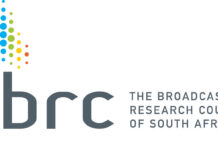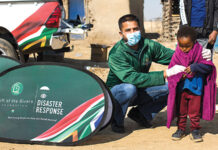(Webtorial)
Vega students win two Silver Pendorings
With five Vega School students listed as finalists in the 2016 Pendoring Awards recently held at the Vodacom World in Midrand, the Johannesburg campus roared in applause when they took home two sought-after top Silver awards.
The two silver awards presented to Vega School, an educational brand of The Independent Institute of Education (The IIE), were gladly received by Gerhard Cronje, Helen Aadnesgaard and Cheri Kustner in the Communication Design category for their campaign ‘TP vir bome’. Marjorie Meijerink won her Silver in the Integrated Campaign category for ‘Dis kak in die donker’.
The Pendoring awards commenced in 1995 to put the spotlight on the sharpest possible Afrikaans advertising, and has since evolved into a comprehensive, truly South African advertising festival where mother-tongue advertising takes centre stage.
The Vega School brief to the ‘TP vir bome’ team was to “revamp an old South African brand”. The team selected a campaign on environmental awareness that focused on the promotion of one-ply toilet paper over two-ply as a means of saving trees. “We chose this theme as it was a particularly hard challenge. We wanted to stretch ourselves and really test our abilities.. One-ply is not an easy sell,” chuckles Aadnesgaard.
“In the comfort of home, more privileged individuals would not necessarily be open to the concept of using one-ply toilet paper, so we selected a backdrop theme of the Oppikoppi music festival, where most middle-class people would typically be more accepting to the idea of roughing it and stepping out of their comfort zone. Each strip of toilet paper is printed with a different cartoon which tells a story, block by block. It is fun, and draws in the consumer,” adds Kustner, who was responsible for the illustrations.
The down-to-earth concept was translated into Afrikaans by Cronje, who explains its beauty in these terms: “The more you sh*t, the more you save paper!”
The concept was interesting, and the copy was strong which enabled people to get immersed in the storyline, continues Kustner.
“The strength, and ultimately the reason I believe we won, was that it was a long storyline that enabled us to develop the idea while exhibiting our skills. The backdrop of Oppikoppi was also one that all demographics could identify with,” says Aadnesgaard. The team was delighted with their award, with Cronje hailing it as “the greatest day of my life”.
Marjorie Meijerink’s Consol campaign was based on the idea that lack of electricity holds back education in sub-Saharan Africa. Her poster and billboard campaign targeted university campuses in more affluent areas to create awareness among undergraduates to not take their education for granted.
“Dis Kak in die Donker” is a campaign by Consol in partnership with Education Africa,that aims to create awareness about the link between the lack of electricity and education. It does so by putting the viewer in a position of needing a direct source of light to read a message in full. The campaign’s call to action is to help Consol and Education Africa to distribute solar jars to children beyond the borders of South Africa, by either buying a solar jar or by making a donation to the campaign,” explains Meijerink.
“The executions are all based on the insight that you can’t read or write without light. Each part of the campaign illustrates this by means of light-reflective typography on the posters and billboards, or the brightness setting of a digital device. The light-reflective typography only becomes visible once the viewer shines a direct light on it, for example a camera flash on the poster or billboard. This helps to illustrate the idea that education is impossible without light.
“This campaign shows that Consol’s solar jar is the ideal solution to provide a safe and direct source of light after dark, and proves that the lack of electricity can no longer stand in a child’s way to be educated,” explains Meijerink.
Aadnesgaard says that Vega teaches students to have a social conscience in their work, and saving trees is something aligned with the tertiary institution’s approach to creative thinking and advertising. “For instance, after Vega I would ideally like to work for an NGO like Amnesty International – and make a difference in the world,” continues Meijerink.
Explaining the consistency with which Vega students win international and local creative awards, Kustner concludes: “Vega’s lecturers are really hands on. Throughout the process I could call on them for pointers and assistance. They’re always willing and available.”
Other finalists from Vega included Marvin Panda in the ‘Student – Radio Communication’ category; Koketjo Masebe in the ‘Student – Print Communication’ category; and Saskia Sevenster and Bianka Wessels in the ‘Student – Communication Design’ category.
| Issued by : | Karen Cooper PR Worx 011 896 1818 |
| On behalf of : |
Fiona Peake Vega School 011 521 4600 |























































































